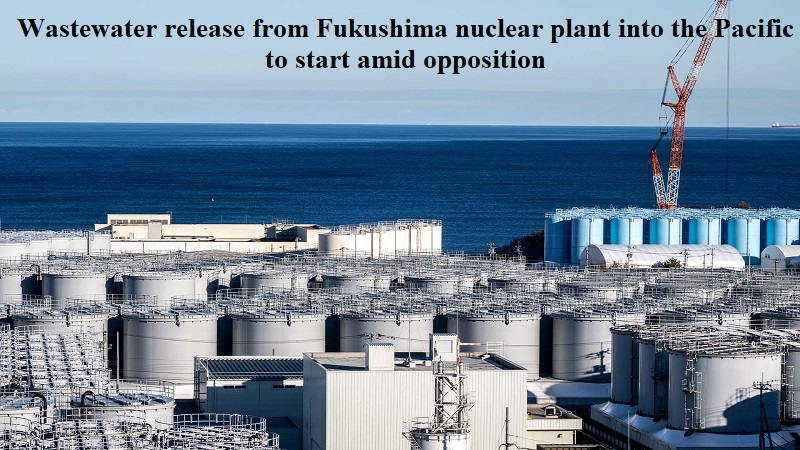
Japanese Prime Minister Fumio Kishida announced on Tuesday (August 22) that the discharge of wastewater from the Fukushima nuclear plant into the Pacific Ocean will commence on Thursday (August 24), despite opposition from both fishermen and China.
Japan maintains its stance that releasing over 500 Olympic swimming pools’ worth of water into the ocean is safe. The United Nations atomic agency has endorsed Japan’s perspective.
Kishida stated, “We will ask TEPCO to make preparations for oceanic discharge in line with the plan approved by the Nuclear Regulation Authority. If weather and sea conditions permit, discharge is expected to start on August 24.” TEPCO refers to the operator of the Fukushima plant.
The Fukushima-Daiichi nuclear plant experienced a catastrophic earthquake and tsunami in March 2011, resulting in the deaths of around 18,000 people. This event ranks among the worst nuclear disasters in history.
Subsequently, TEPCO collected 1.34 million tonnes of water used to cool highly radioactive reactors. This water was combined with groundwater and rain infiltration. TEPCO claims to have filtered and diluted the water, removing all radioactive substances except for tritium, which remains at levels deemed not hazardous.
The water will be discharged from the plant into the ocean along Japan’s northeastern coast at a maximum rate of 500,000 liters per day.
Environmental organization Greenpeace criticized the filtration process as “flawed” and warned that a significant amount of radioactive material will be released into the sea over the next few decades.
Contrary to these concerns, Tony Hooker, a nuclear expert from the University of Adelaide, dismissed the fears as “fear-mongering.” He noted that tritium has been released by nuclear power plants for years without demonstrable negative environmental or health consequences.
In July, the UN atomic watchdog indicated that the release would have minimal radiological effects on people and the environment.
Despite worries, a considerable number of South Koreans are apprehensive about the potential water release and have been protesting and stockpiling sea salt as a precaution. However, the government under President Yoon Suk Yeol, aiming to improve strained relations with Japan, has not objected to the plan, even though it entails domestic political risks.

Post Your Comments